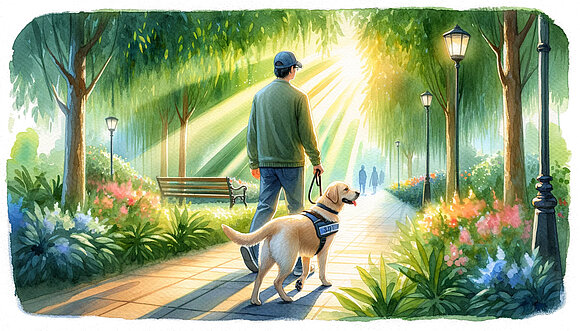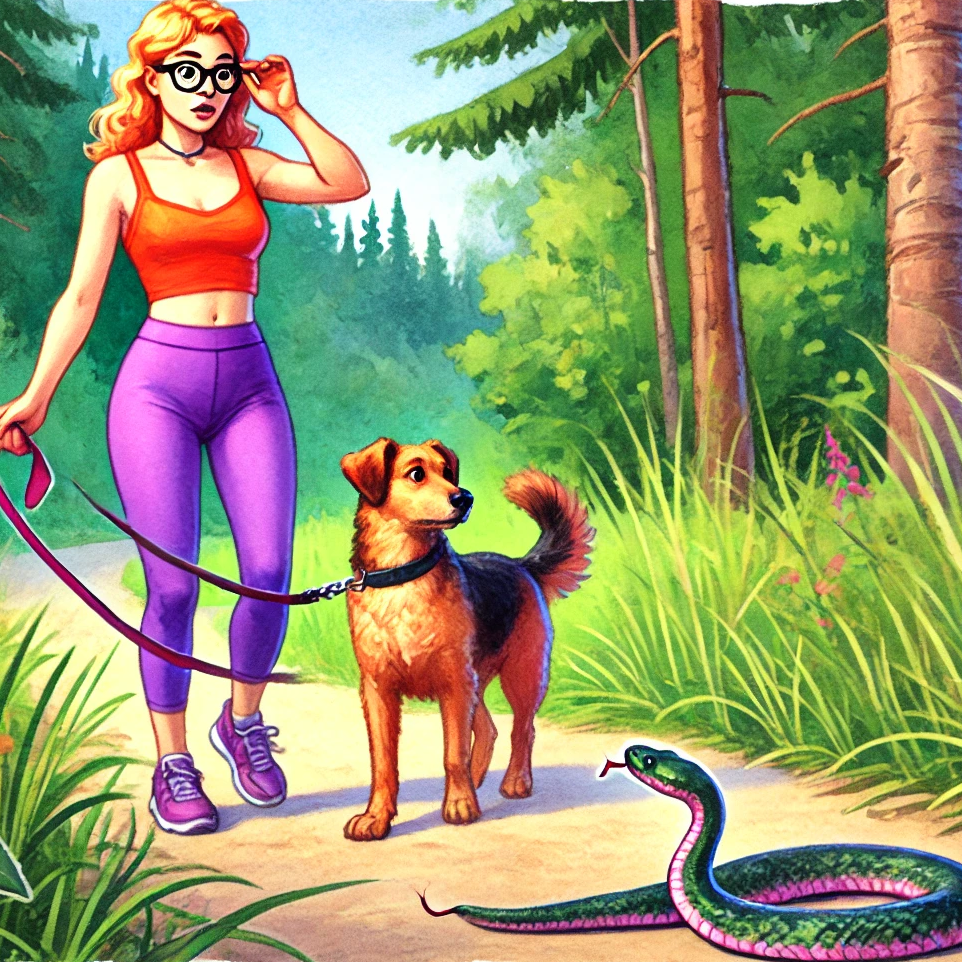Your path to becoming a guide dog: what you need to know and how to proceed

What is a guide dog and what can it do?
Guide dogs are specially trained assistance dogs that help visually impaired or blind people to move safely in everyday life. They are trained to avoid obstacles, recognize curbs, find doors and lead you to different places on command. But they are not just helpers, they are also loyal friends who offer you emotional support and give you peace of mind.
Skills of a guide dog
A guide dog can:
- Recognize and avoid obstacles in the way.
- Choose the safest route to your destination.
- Indicate steps and kerbs.
- Detect dangers such as approaching vehicles.
- Guide you to important destinations such as doors, seats or crosswalks.
Requirements: Are you ready for a guide dog?
Before you decide to get a guide dog, it is important to make sure that you meet the necessary requirements. A guide dog requires a lot of attention, care and responsibility.
Personal requirements
- Stable health: You should be able to look after a dog and walk it regularly. This includes being able to meet its daily needs such as feeding, walking and grooming.
- Living situation: Your living situation should be dog-friendly. A guide dog needs space to move freely, as well as access to outdoor areas for regular walks.
- Time and commitment: A guide dog requires a lot of time. You must be willing to commit to dog training and daily care.
- Sense of responsibility: A guide dog is a living creature that is dependent on you. You should be aware that you are responsible for its welfare.
The path to becoming a guide dog: step by step
The process of getting a guide dog is carefully structured and can take some time. Here are the most important steps you need to go through:
1. inform yourself thoroughly
Before you decide to get a guide dog, you should inform yourself thoroughly about the subject. Visit websites of organizations that train guide dogs, talk to other guide dog owners and consult your ophthalmologist or other experts.
2. application and medical certificate
In order to obtain a guide dog, you usually have to submit an application to your health insurance company or another competent authority. You will need a medical certificate confirming your visual impairment and proving that a guide dog is necessary for you.
3. choosing the right organization
There are various organizations that train and place guide dogs. It is important to choose a reputable and recognized organization that will support you throughout the process.
4. personal interview and aptitude test
The selected organization will conduct a personal interview with you to find out whether a guide dog is suitable for you and whether you meet the requirements. There is usually also a suitability test to check whether you are able to handle a guide dog.
5. waiting for the right dog
Once you have passed the aptitude tests, the search for a suitable dog begins. This process can take several months, as the dog must be matched exactly to your needs. The dogs undergo intensive training before they come to you.
6. the familiarization phase
As soon as you receive your guide dog, the familiarization phase begins. You will train intensively with the dog to ensure that you become a good team. During this time, you will also learn how to properly manage and care for the dog.
The costs: who covers them?
The training and purchase of a guide dog is expensive. A guide dog usually costs between 25,000 and 35,000 euros. The good news is that in most cases the costs are covered by health insurance if there is a medical need. However, it is important to clarify the assumption of costs with the health insurance company in advance and to submit all the necessary documents.
After receiving the dog: Care and continuation
A guide dog requires continuous care and attention even after training and acclimatization. You need to look after its health, schedule regular visits to the vet and ensure that it gets regular exercise and mental stimulation.
Regular training sessions
Even after the handover, it is important to carry out regular training sessions with your guide dog. This will keep him fit and ensure that he performs his tasks reliably.
Social interaction
A guide dog is not only a working animal, but also a living creature that needs social interaction. Make sure he has enough contact with other dogs and gets regular time to play and relax.
What to do if there are problems?
If problems arise after the handover, it is important that you act quickly. Contact the organization that placed the dog with you or an experienced dog trainer. Problems can often be solved through targeted training or adjustments to everyday life.
A guide dog - your companion for an independent life
A guide dog can give you back some independence and make your life much easier. However, the decision to get a guide dog needs to be carefully considered. With the right preparations, the right organization at your side and a strong sense of responsibility, nothing stands in the way of you and your new, loyal companion.
More articles for you
Contact form problem fixed
Unfortunately, our contact form has not worked as desired in recent weeks. 😔 Due to an error in the spam detection, normal messages were also incorrectly filtered out.Read moreDangerous encounter: What you should do if your dog is bitten by a snake
It's every dog owner's nightmare: you're out in nature with your four-legged friend, he's sniffing the ground curiously, and suddenly you hear a hissing sound. Before you know it, your dog flinches and you recognize the signs of a snake bite. But don't panic! In this article, you will learn how to…Read moreWhat you should know about cherries for dogs
You may have heard that cherries are good for your health. They contain lots of vitamins, antioxidants and fiber, which can strengthen the immune system and aid digestion. But are cherries also suitable for dogs? And if so, how much and in what form should you offer them to your four-legged friend?…Read more


